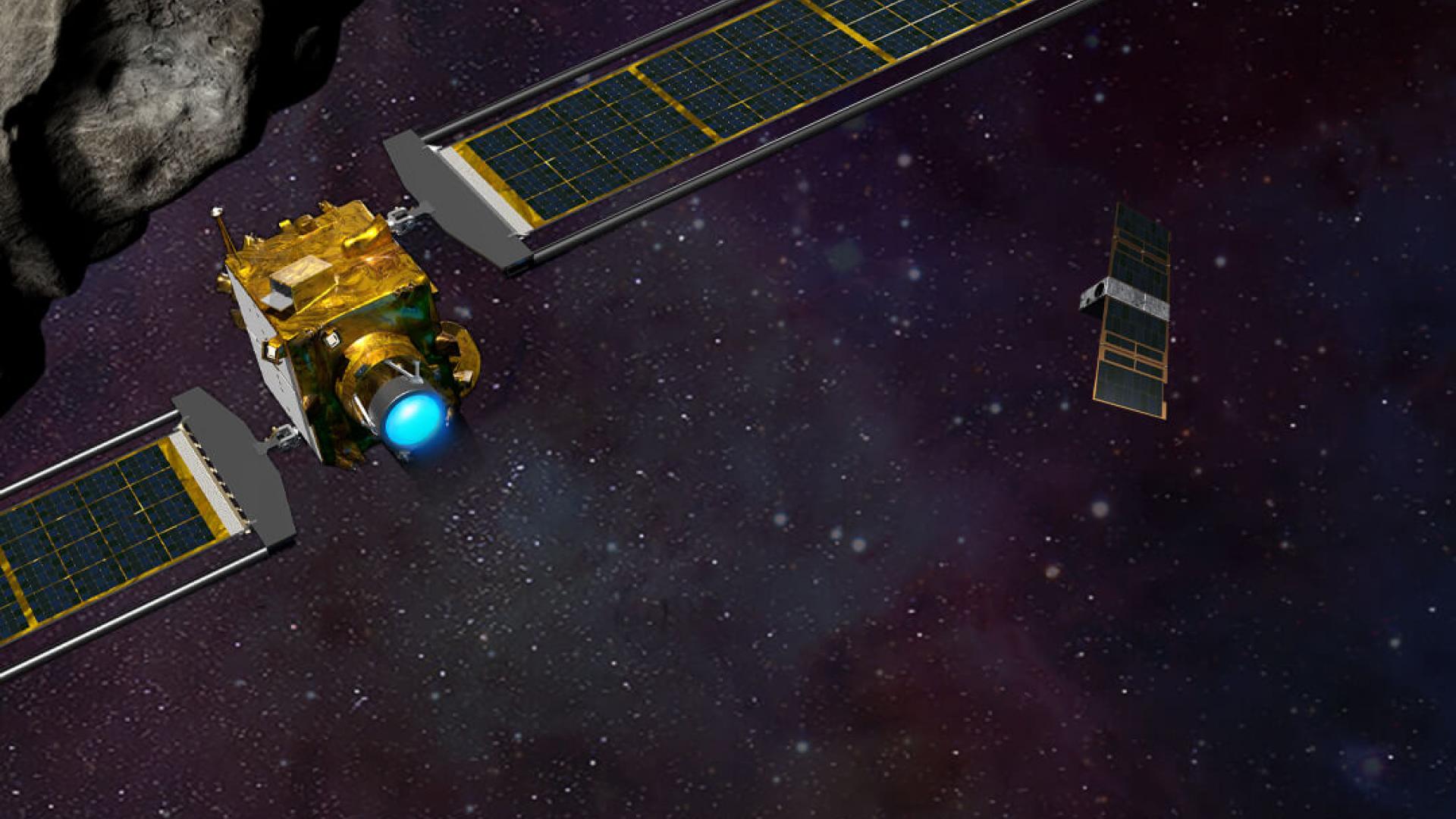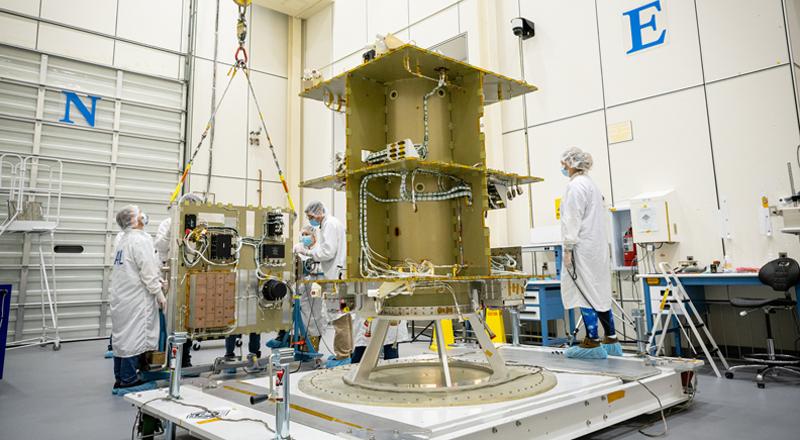News
A Mission with Impact
The Double Asteroid Redirection Test (DART) – NASA’s first in-space planetary defense demonstration – will get one chance to hit its target, the small moon in the binary asteroid system Didymos. The asteroid is an ideal test target: measuring the change in how the smaller asteroid orbits its larger partner is much easier than observing a change in a single asteroid’s orbit around the Sun.
APL leads and is developing the DART mission for NASA. Despite the challenges of a global pandemic, work is humming along at APL and other locations across the country, as the mission heads toward its summer 2021 launch – and attempts to pull off a feat so far seen only in science fiction movies.
Observing Didymos
To direct the DART spacecraft to its intended target – a binary asteroid that consists of a small moon, Dimorphos, orbiting a larger body, Didymos – scientists first need to understand how the system behaves. They’ve been watching Didymos from Earth since 2015, and now, an international campaign coordinated by Cristina Thomas, DART’s Observing Working Group lead from Northern Arizona University, is making critical observations using powerful telescopes to understand the state of the asteroid system before DART reaches it. Observations today will help researchers better understand the extent of the dent DART makes when it slams into Dimorphos in September 2022.
The most recent observation campaign took place on Cerro Paranal in northern Chile, where scientists viewed Didymos using the Very Large Telescope, which is run by the European Southern Observatory. The VLT comprises four telescopes, each with 8.2-meter mirrors, two of which were used to look at Didymos.
“The Didymos system is too small and too far to be seen from Earth as anything more than a point of light,” said APL’s Andy Rivkin, DART investigation team co-lead, who participated in the observations. “But we can get the data we need by measuring the brightness of that point of light, which changes as Didymos rotates and Dimorphos orbits.”
Quick dips in brightness occur when the smaller object – in this case, Dimorphos -- passes in front of or is hidden behind a larger object (Didymos) from Earth’s point of view. These observations will help scientists determine the location of Dimorphos about Didymos and inform the exact timing of DART’s impact – and maximize the deflection.
The investigation team will observe Didymos through next spring. Final ground-based observations will occur as the spacecraft speeds toward the asteroid, as well as after impact.



